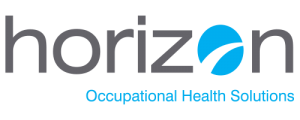
Fatigue can be defined as a physiological state of reduced mental or physical performance that comes about as a result of sleep loss or extended wakefulness, circadian phase, or workload via mental and/or physical activity. It’s broadly understood that fatigue in the workplace, whether a result of work related factors or not, can impair a workers alertness and ability to perform duties. In safety sensitive environments, any hindrance to a workers ability to perform can cause safety concerns for the individual, and the workplace as a whole.
Understanding Fatigue Management – A great deal of research has been done into the identification, measurement, and management of fatigue; however it is still poorly understood. This may be due to the characteristics and variability of work conditions across different industries. For example, fatigue in manufacturing is largely related to physical demands, and in aviation fatigue is related to sleep and shift-work. At the end of the day, employers must take into account the various aspects of fatigue, such as sleep, shift, or workload, and how these factors can influence the severity of fatigue outcomes.
Fatigue and the Workplace – Fatigue is a multi-dimensional construct (e.g., mental and physical fatigue) and can be acute or chronic in nature. Increased fatigue can be linked to decreased workplace performance, health, overall well-being, and day-to-day workplace satisfaction and retention.
Sources of fatigue in in the workplace can span from all areas of the work system and include long work hours and shift schedules that affect circadian rhythms, organizational culture, psychosocial factors, time demands, design of the physical environment, and task demands.
Fatigue Management Practices – Existing guidelines at some workplace have emphasized the joint responsibility of the individual worker, and their employer to monitor and address fatigue associated risks. Current recommendations and strategies for addressing fatigue in practice include improving sleep hygiene among individual workers, and implementing rest break policies, shift length and scheduling restrictions and rides home for workers when required.
Barriers to Fatigue Management – Factors such as variability in work conditions, organizational safety culture, worker profiles, and distinct barriers within differing industries increase the complexity and difficulty with which fatigue can be monitored or managed. It’s important to understand the similarities and dissimilarities across industries on existing fatigue monitoring and management and barriers to effectively implement fatigue management practices.
Effective fatigue monitoring and management in some work systems, though, is sometimes limited by a lack of measures of worker fatigue, limited data to characterize multidimensional demands during working hours and predict fatigue risks.
Improving Fatigue Management – From the research it’s clear that future work is needed to firstly identify new strategies to monitor work demands to predict fatigue and associated risks in the context of specific work systems. Secondly there is work needed to implement decision support tools to guide decision-makers in managing fatigue in the work force, and thirdly to develop a safety culture related to fatigue in the workplace, beginning through education programs and spanning workplaces and professional organizations.
To learn about how Horizon Occupational Health Solutions can help your organization to manage fatigue in the workplace, contact us at marketing@horizonohs.com.
Sources: Mehta and Agnew, 2012; Mehta and Parasuraman, 2014; Barker & Nussbaum, 2011; Geiger-Brown et al.; 2004; Smith-Miller et al., 2014; Trinkoff et al., 2011; Josten, Ng, & Thierry, 2003
